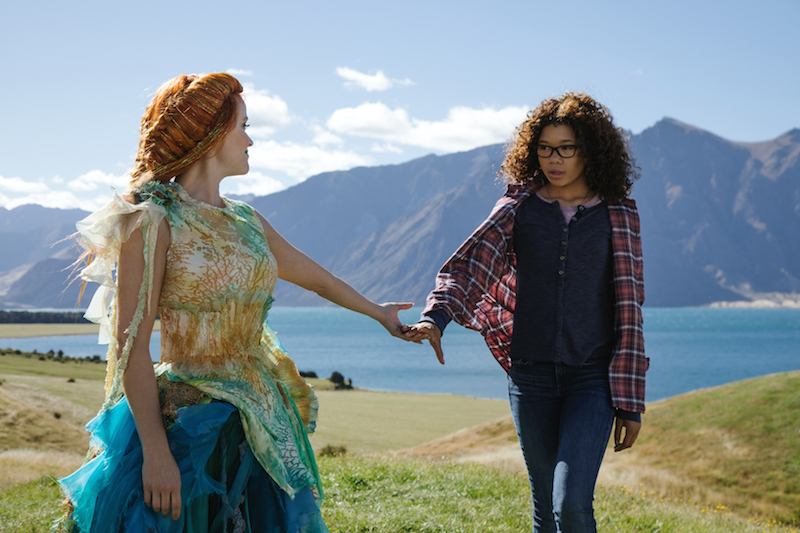
A few months ago, Disney released photos of the three big stars, resplendent in their costumes, who would be playing the celestial warriors in Ava DuVernay’s A Wrinkle in Time.
There was Reese Witherspoon as Mrs. Whatsit, luminous in long, strikingly orange hair. There was Mindy Kaling as Mrs. Who, sporting a technicolor dress and Princess Leia-style braids. And last, but far from least, there was Oprah Winfrey herself as the towering Mrs. Which, blinged-out with bejeweled eyebrows.
The photos—and the chosen actresses—were meant to cause a bit of a social media stir and they did: You couldn’t have orchestrated a better Twitter moment.
But watching A Wrinkle in Time, I couldn’t help but feel that the film—with its multicultural cast and stated message of female empowerment and embracing your inner child—reminded me a bit of those “woke” Dove ads that spread a message of body positivity, all while trying to sell soap and moisturizer. It’s not that I doubt the sincerity of all those involved. It’s just that it turns out that creating a Twitter-approved event and creating a great film are two very different things.
For those not familiar with Madeleine L’Engle’s beloved children’s novel, here’s the plot: Young Meg (Storm Reid) has been having difficulty at school ever since her doting physicist father (Chris Pine) disappeared. Since he—along with Meg’s scientist mom (Gugu Mbatha-Raw)—had been theorizing about tesseracts and man’s ability to traverse the universe, it’s not clear what happened: Did he travel to another dimension? Is he trapped there? Or did he choose to not come home?
Meg’s precocious and spirited little brother, Charles Wallace (Deric McCabe) may hold the key to her answers. Lately, he’s been talking to a trio of enchantresses from another dimension. He introduces them to Meg. And soon Meg, Charles Wallace, and Calvin (Levi Miller), a popular boy from school who feels inexorably drawn to Meg and her quest, are traveling through space and time in search of Meg’s father. But will the evil force IT get to them first?
Witherspoon, Kaling, and Winfrey all do the best they can with their somewhat awkward, close-up-heavy parts: Kaling hams it up, as is her instinct—making her Mrs. Who more playful than soulful; Witherspoon, playing a somewhat flighty and inexperienced enchantress who is initially unimpressed with Meg, is charming as ever. And Winfrey manages to convey—as she so often does—a kind of preternatural wisdom and kindness. That being said, every time my screening audience saw Winfrey looming, god-like, over the proceedings, a little titter went through the crowd. The problem with such high profile casting is that it has potential to overwhelm the story.
But honestly, my biggest issue with A Wrinkle in Time is that it has no real magic. The CGI is quite impressive, but rarely transformative. Individual shots are beautiful, but mostly you just shrug and think, “Huh, look at that CGI cave.” There are a few exciting moments—a chase through a menacing forest, a pit-stop in a creepy suburbia—but even they feel like the ticking off of plot points. It’s impossible to not cheer for the message of A Wrinkle in Time—I mean, who doesn’t believe in girl power and the enduring strength of love? But those messages should be conveyed organically, through plot and character. Here, they have all the subtlety of a promoted tweet.
